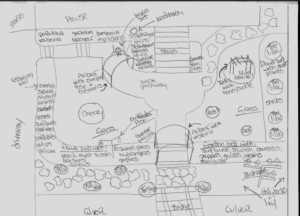I have chosen to study The Impact of Backyard Gardening on Wildlife Sustainability: How Urban Gardens can affect the lives of local wildlife.
Hypothesis: The more effort that backyard gardeners put into increasing the appeal of their yard to local wildlife, the more wildlife will appear
Prediction: With the addition of specific attributes (water, food, shelter, protection, nesting), backyard gardeners can attract and aid in the sustainability of local wildlife.
Response Variable: Changes in the amount of wildlife visiting the area. This is a continuous response variable, due to the number of changes that can be made to one’s yard.
Extreme weather changes could be classified as an environmental gradient in this experiment.
Experiment: By ensuring that the yard meets the basic needs of wildlife, we can measure the number of changes between the amount of wildlife, the species, size, approximate age, and whether they return.

Given the scale of this course, I am not sure it is possible for you to measure changes to modifications you make to your garden. I am not clear on what changes you would make, but some take time to implement and plants take time to grow and so you may not be able to measure changes in the first year, it may take a few years.
Can you use a few neighbours gardens who have different types of vegetation? Or areas that are xeriscaped and those that are grass?
Overall, you are not clear on exactly what your environmental gradient is here? You also mention extreme weather changes and I am not clear how that fits in with your hypothesis and prediction as written.
Your hypothesis is a bit vague. What do you mean by ‘effort’? Try to be more specific. Focus on a specific aspect of gardening – vegetation structure and composition for instance.
Your prediction should be related to your hypothesis but more specific to what you are measuring. In this case you are not measuring sustainability or overall wildlife populations. What will you measure? You don’t list a predictor variable?
Your idea about how backyard gardening affects local wildlife is interesting! You think that if people make their yards more appealing to wildlife, like by adding food and shelter, more animals will show up. But to make your idea clearer and easier to test, try being more specific about what exactly makes a yard attractive to wildlife. Maybe you could say how many plants or bird feeders someone needs to have. Also, make sure you can easily measure the changes in wildlife visiting the area. Think about things that might affect your results, like different weather or other nearby habitats. By doing this, you can make sure your study gives reliable answers about how gardening affects wildlife in cities.